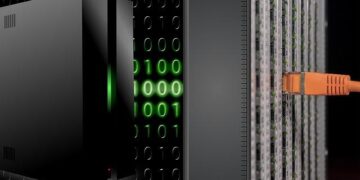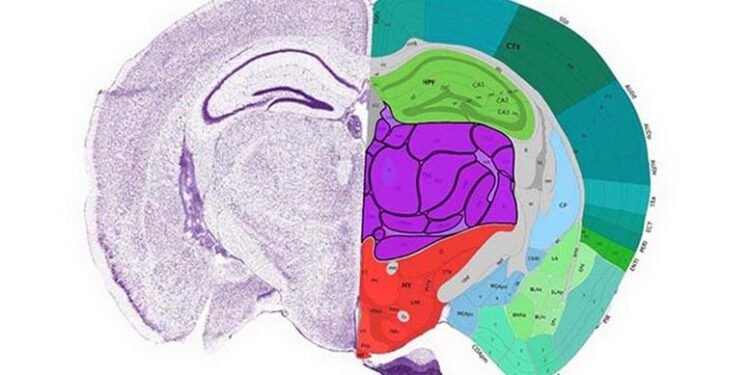In a groundbreaking advancement bridging neuroscience and artificial intelligence, scientists have utilized cutting-edge AI technology to map previously uncharted regions of the mouse brain. This innovative approach has not only revealed intricate neural pathways that were once invisible but also promises to accelerate research into brain function and neurological disorders. The study, recently featured by Live Science, marks a significant step forward in understanding the complex architecture of the brain, offering new insights that could shape the future of both basic and clinical neuroscience.
Scientists Employ Artificial Intelligence to Reveal Hidden Regions of the Mouse Brain
Researchers have leveraged advanced artificial intelligence algorithms to explore and chart previously unrecognized sections of the mouse brain with unprecedented precision. By integrating machine learning with high-resolution imaging techniques, the team successfully identified subtle neural pathways and intricate connections that traditional methods had overlooked. These discoveries offer profound insights into brain function, shedding light on the complexity of neural circuits involved in behavior, memory, and sensory processing.
The innovative approach involved training neural networks on vast datasets, allowing the AI to detect patterns invisible to human analysis. Key benefits of this AI-powered mapping include:
- Accelerated data processing: Rapid analysis of terabytes of imaging data.
- Higher accuracy: Detection of microstructures missed by manual techniques.
- Comprehensive brain coverage: Identification of hidden regions facilitating deeper biological understanding.
| Feature | Traditional Mapping | AI-Driven Mapping |
|---|---|---|
| Data Volume Processed | Limited | Extensive |
| Detection of Micro-Connections | Moderate | High |
| Analysis Speed | Slow | Fast |
| Ability to Discover New Regions | Low | Significant |
New AI-Driven Techniques Offer Unprecedented Insights into Neural Connectivity
Groundbreaking research teams have integrated cutting-edge artificial intelligence with advanced imaging technologies to chart previously unexplored neural pathways in the mouse brain. This novel approach leverages machine learning algorithms capable of analyzing vast datasets of neural activity, allowing scientists to decode complex connectivity patterns that were once hidden in the brain’s dense architecture. The ability to visualize and interpret these uncharted regions is expected to revolutionize our understanding of brain function, offering clues about how neurons communicate and coordinate behavior.
Key advantages of this AI-driven mapping include:
- Enhanced resolution: Detecting subtle synaptic connections missed by traditional methods.
- Speed and scale: Processing terabytes of imaging data in days rather than months.
- Predictive insights: Modeling how different brain regions interact under various stimuli.
| Technique | Function | Impact |
|---|---|---|
| Deep Learning Segmentation | Automated neuron detection | Increased accuracy in mapping |
| 3D Reconstruction | Visualizes neural networks | Improved spatial understanding |
| Predictive Modeling | Simulates brain activity patterns | Insights into functional connectivity |
Experts Recommend Expanding AI Applications to Accelerate Brain Research and Disease Understanding
Leading scientists emphasize the transformative potential of artificial intelligence in decoding the complexities of the brain. By integrating AI-driven analysis, researchers can now explore previously inaccessible neural territories, allowing for more comprehensive brain mappings. The AI algorithms excel at identifying subtle patterns in vast neurological datasets, revealing structural and functional insights that manual techniques often miss. This leap forward not only accelerates the pace of fundamental brain research but also opens new avenues for understanding neurodegenerative and psychiatric disorders at an unprecedented resolution.
Experts advocate for expanding AI applications in several key areas to maximize its impact on neuroscience:
- Automated data annotation: Enhancing accuracy and speed in labeling complex brain imaging data.
- Predictive modeling: Simulating disease progression and potential treatment outcomes.
- Integrative analysis: Combining genetic, behavioral, and imaging datasets for holistic insights.
| Application Area | Potential Impact | Current Challenges |
|---|---|---|
| Data Annotation | Faster, error-free labeling | Variable data quality |
| Predictive Modeling | Early disease detection | Complex disease mechanisms |
| Integrative Analysis | Comprehensive diagnostics | Data harmonization |
The Way Forward
As AI continues to advance, its integration into neuroscience promises to unlock deeper insights into the brain’s complex architecture. This latest achievement in mapping previously uncharted regions of the mouse brain not only expands our fundamental understanding of neural networks but also sets the stage for future breakthroughs in treating neurological disorders. With technology and biology converging, the frontier of brain research is rapidly evolving – offering hope for innovations that could one day transform human health.































